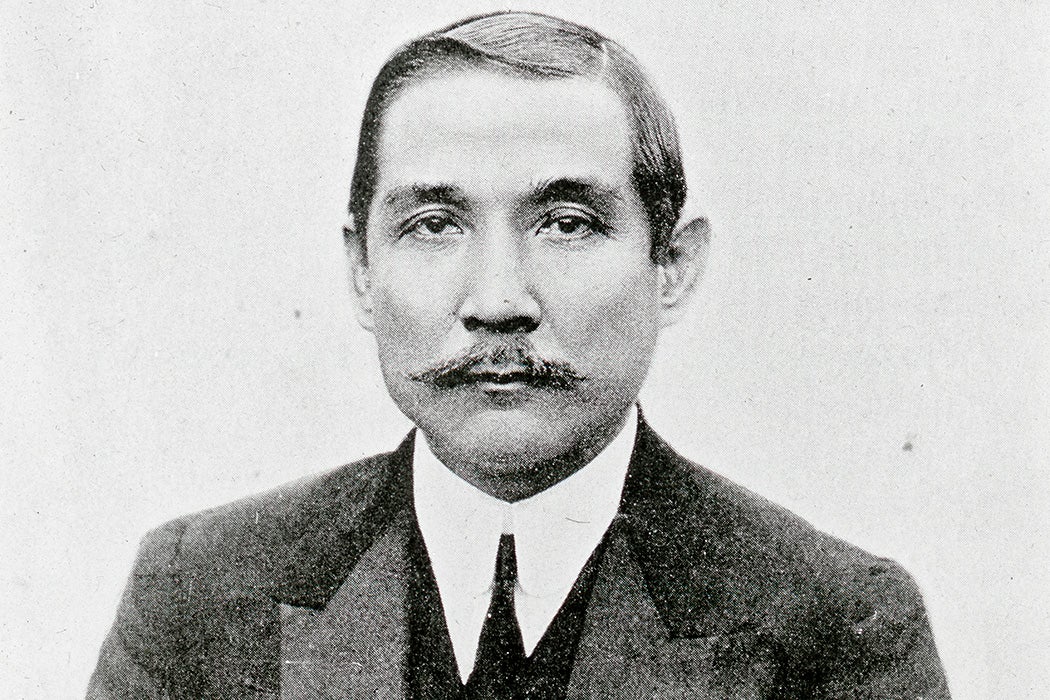Sun Yat Sen—the statesman widely credited with toppling China’s Qing dynasty in 1911—famously sought support for his revolution from ethnic Chinese communities around the world. It’s no surprise, then, that museums in his honor are found across the world, from Seattle to Honolulu.
According to historians Huang Jianli and Hong Lysa, a deeper investigation of these institutions demonstrates how Sun’s life has been appropriated to serve national interests in Singapore. For example, a mansion where Sun briefly lodged in Singapore has taken on out-sized historical significance. The so-called Sun Yat Sen Villa has been gazetted as a national monument, restored from a dilapidated condition, and reopened, to great fanfare, as the Sun Yat Sen Nanyang Memorial Hall (SYSNMH).
Sun’s work in Southeast Asia included the establishment of a branch of the Tong Meng Hui (United League) revolutionary society in the villa in 1905, with the aid of businessmen like rubber magnate and villa owner Teo Eng Hock. His historic activities in Singapore represent the museum’s raison d’être. By analyzing the rhetoric surrounding the villa’s reopening, Huang and Hong argue that Singapore has pursued “the myth of Sun Yat Sen as the founding father both of China and of Singapore’s modernity even while maintaining a distance from China.”
Their analysis draws on comments by a prominent politician who was deeply involved in the launch of the SYSNMH, such as his claim that “we Chinese could still be in pigtails and bound feet! … Singapore Chinese would not be the modern Chinese they are today” without Sun’s revolution.
One implication of that claim could even be “Singapore is the fulfillment of Sun’s legacy, while China is still floundering in its effort,” Huang and Hong write. But they add that such a connection between Chinese and Singaporean history “foregrounds a reductionist presentation of both.”
On the other hand, alternative narratives of Sun’s role in Singapore have also been proposed, as Huang and Hong observe in their discussion of a theater production commissioned by the museum. The final product, One Hundred Years in Waiting, centered Sun’s Malaya-born lover Chen Cuifen—which proved to be a controversial artistic choice by playwright Kuo Pao Kun and his collaborators. Chen had supported Sun’s efforts to cultivate an interest in revolution in Overseas Chinese in Singapore for some seventeen years. She was on good terms with Sun’s wife, Lu Muzhen, with whom she sailed to China to meet Sun after the events of 1911. At least, she made it as far as Macau; the audience was provided with scant information about her life after she abandoned the trip beyond that city, write Huang and Hong.
The play, which jumps between past and present, questions the value of remembered history. For instance, video footage incorporated into the production showed elderly Singaporeans “reminiscing hazily and ineffectually about their forebears who had helped Sun.”
Ultimately, audiences were dismayed that the play failed to provide any definitive resolution to the relationship between Sun and Chen, much less a heroic depiction of Sun and his relationships. One prominent advocate of Chinese culture described the play as “just an experimental arts performance,” lamenting, “What is most disappointing to me was that it has failed to let the audience have a deeper understanding of Sun’s personal life and character.”
Weekly Newsletter
In the end, though, Huang and Hong laud the production as “an interrogation and deconstruction of the confident narrative put forward by the [SYSNMH],” as the multi-ethnic creative team “set out to provoke [audiences] to contemplate their distance and disjuncture from Sun’s world.”
“The genealogy of Singapore’s modernity originating from Sun was constructed for the consumption of its Chinese population and for the purpose of attaining a pre-eminent international position in the new millennium,” they remark. However, as works like One Hundred Years in Waiting suggest, “such a version of the nation’s history and destiny is not simply or even necessarily widely accepted.”
Teaching Tips
- “Rebellion in China,” Amrita Bazar Patrika (November 7, 1911)
- “China,” Morning Star [Utayatārakai] (February 12, 1912)
- “Highlights on China,” The Trinity Tripod (June 28, 1912)
- “Vernacular Papers: I—Foreign Politics,” Report on Native Papers in the Madras Presidency (January 20, 1912)
Do a comparative analysis of the SYSNMH and the Sun Yat-sen Mausoleum in Nanjing.
- “Searching for a Modern Chinese Monument: The Design of the Sun Yat-sen Mausoleum in Nanjing” (2005)
- “Beyond Revolution: Notes on Contemporary Chinese Architecture” (1998)
Discuss Sun Yat Sen’s philosophies in relationship to Singapore and elsewhere:
- “The French Connection that Failed: France and Sun Yat-Sen, 1900–1908” (1972)
- “The Kuomintang Movement in Malaya and Singapore, 1912–1925” (1981)
- “Overseas Chinese Nationalism in Singapore and Malaya 1877–1912” (1982)
- “Three Visionaries in Exile: Yung Wiṅg, K’ang Yu-Wei and Sun Yat-Sen, 1894–1911” (1986)
Support JSTOR Daily! Join our membership program on Patreon today.







